The 8D problem solving method was developed by Ford Motor Company in the late 1980s. Today, it’s one of the key tools for organizations worldwide seeking to improve quality and operations. This method has eight steps, or disciplines. They help identify, fix, and stop problems from happening again.
By the end of this guide, you’ll see how the 8D method can turn challenges into chances for growth.
النقاط الرئيسية
- 8D problem solving is a methodical approach originating from Ford Motor Company in the late 1980s.
- The eight disciplines include steps from team formation to permanent corrective actions and team acknowledgment.
- This approach heavily relies on collaboration, documentation, and verification.
- 8D problem solving emphasizes the importance of multidisciplinary teams.
- Communication and clear role definition are crucial for effective implementation.
Introduction to 8D Problem Solving
The 8D Problem Solving Process is a detailed method to find and fix quality issues. It started in World War II, and Ford Motor Company later improved it. This process includes eight steps and a planning stage called D0, added in the 1990s.
This method focuses on teamwork to solve complicated problems. It mixes several quality management practices. This makes it great for the manufacturing and production sectors.
Teams follow the 8D method closely to identify the main causes of a problem and solve it. Here are in short the main steps detailed after:
- D1: Formation of the Team.
- D2: Defining and describing the problem.
- D3: Implementing interim containment actions.
- D4: Root cause analysis.
- D5: Developing and verifying permanent corrective actions.
- D6: Implementing corrective actions.
- D7: Preventive measures.
- D8: Closure and team acknowledgment.
The 8D process is valuable for more than just solving problems. It boosts teamwork, responsibility, and detailed records. This leads businesses towards better operation and long-term success.
History of 8D Problem Solving
The 8D problem solving method has a deep history, starting when industries began to change. Ford Motor Company created it in the 1980s. It was meant to fix ongoing issues in engineering and making things.
Origins at Ford Motor Company
In 1986, Ford Motor Company introduced the 8D method to solve quality and engineering problems. Originally named “Team Oriented Problem Solving,” it was about getting experts together. They aimed to find the main reasons for issues and fix them for good. Later, they added the D0 planning stage to make the method even better.

Evolution Across Industries
Since it started, the 8D method has grown and spread to many areas. It’s now used in car making, food production, healthcare, and tech industries. This shows how it moved from just automotive to being useful everywhere.
Influences from Other Methodologies
8D has been shaped by methods like إدارة الجودة الشاملة (TQM) and Six Sigma. It uses things like Ishikawa diagrams, Pareto charts, and the 5 لماذا. Also, its link with Failure Modes and Effects Analysis (FMEA) helps in solving problems well. This promotes ongoing improvement.
| Key Influences | التفاصيل |
|---|---|
| Total Quality Management (إدارة الجودة الشاملة) | Influenced systematic approaches and integration of continuous improvement practices. |
| سداسية سيجما | Introduced analytical tools and data-driven decision-making strategies. |
| Failure Modes and Effects Analysis (FMEA) | Enhanced problem-solving and preventive measures through shared data and brainstorming sessions. |
The Eight Disciplines Explained
It follows these eight steps to fix complex problems:
D1: Formation of the Team
D1 is about creating a strong team. A group approach is key. It brings different views and skills, making the solution better.
D2: Defining and Describing the Problem
D2 makes sure the problem is clearly stated. This helps everyone understand. It also keeps all steps focused on fixing the actual issue.
D3: Implementing Interim Containment Actions
D3 is about quick, temporary measures to limit the problem’s impact. These actions stop the problem from getting worse until a final solution is ready.
D4: Root Cause Analysis
In D4, tools like the Fishbone Diagram and the 5 Whys help find the real cause of the problem. Knowing this helps create actions that tackle the issue at its core.
D5: Developing and Verifying Permanent Corrective Actions
D5 has the team find and check permanent solutions. The step ensures solutions last and really work. Testing proves these actions will fix the problem.
D6: Implementing Corrective Actions
D6 is when permanent solutions are put into place. It’s important to make sure these solutions work well in the actual system or process.
D7: Preventive Measures
D7 focuses on stopping future problems. Changing systems and processes helps prevent the same issue. These changes also improve the whole system.
D8: Closure and Team Acknowledgment
D8 celebrates solving the problem. The team’s work is documented and shared. Recognizing everyone’s effort is key for morale and future teamwork.
Benefits and Limitations of 8D Method
The 8D Problem Solving Method boosts problem-solving skills within companies. It dives deep into issues to find their root causes. This method also encourages teams with different skills to work together. They use short-term fixes to control problems, leading to long-lasting quality improvements.
Benefits of 8D Problem Solving
8D problem solving excels at finding the real cause of issues. Teams use the 5 Whys, Fishbone diagrams, and cause-and-effect analysis to uncover these causes. They then create and test actions to fix these problems for good. This reduces the chance of the same issues happening again and cuts costs linked to poor quality. Plus, involving employees in solving problems boosts their empowerment, happiness at work, and morale.
This process also helps organizations keep getting better by offering insights that improve practices. It’s acknowledged in quality systems like ISO-9001:2015 and IATF 16949:2016. This shows its effectiveness and flexibility across different fields. AS13000 sets a Problem-Solving standard for aero-engine suppliers, proving the method works well even in critical sectors.

Limitations to Consider
While 8D has many pluses, it also has downsides. The process is complicated and requires lots of training in problem-solving techniques. It leans heavily on detailed documentation and tools like Pareto charts and Fishbone diagrams. These can demand a lot of resources.
The 8D method goes to the root of complex problems to find long term solutions, but is heavy and far from a quick Agile solution, thus the D3 phase (Implementing interim containment actions)
The success of 8D greatly depends on how well the team works together. Strong teamwork and clear communication are key. If the team doesn’t work well together, it can be hard to find and fix root causes effectively. This shows how critical good team leadership and management support are to the 8D process.
Core Components of the 8D Problem Solving Process
The 8D problem-solving method is widely used in different fields like automotive, manufacturing, and healthcare. It tackles problems by...
لقد قرأت 44% من المقال. الباقي لمجتمعنا. هل أنت عضو بالفعل؟ تسجيل الدخول
(وأيضًا لحماية المحتوى الأصلي لدينا من روبوتات الكشط)
مجتمع الابتكار العالمي
تسجيل الدخول أو التسجيل (100% مجاناً)
اطلع على بقية هذه المقالة وجميع المحتويات والأدوات الخاصة بالأعضاء فقط.
فقط المهندسون والمصنعون والمصممون والمسوقون الحقيقيون المحترفون.
لا روبوت، ولا كاره، ولا مرسل رسائل غير مرغوب فيها.
قراءات ذات صلة
التعليمات
What industries utilize 8D Problem Solving?
Though Ford made it for cars, many areas now use it. Healthcare, engineering, and customer service benefit from its clear steps. It’s good for solving problems in all kinds of work. By fixing root problems well, doing effective fixes, and keeping records, 8D stops problems from coming back. It helps make quality always get better.
What are the eight disciplines in 8D Problem Solving?
The 8 steps are: 1. Forming a Team 2. Detailing the Problem 3. Taking Temporary Steps to Keep it in Check 4. Finding the Root Cause 5. Creating and Checking Permanent Fixes 6. Applying Fixes 7. Taking Steps to Prevent Repeat 8. Finishing and Recognizing the Team’s Work.
What are the benefits of using 8D Problem Solving in an organization?
The 8D method helps teams solve issues well, find the real problems, work together better, and keep raising quality. It gives a clear plan to fix issues and stop them from coming back. Some tools include the Fishbone Diagram for finding root causes, the 5 Whys for getting to the problem’s heart, and the Pareto Chart. The chart helps spot what needs attention most.
External Links on Problem Solving and Process Management
المعايير الدولية
(حرك الرابط لرؤية وصفنا للمحتوى)
مسرد المصطلحات المستخدمة
Corrective Action and Preventative Action (CAPA): نهج منهجي لتحديد حالات عدم المطابقة والمشكلات المحتملة والتحقيق فيها ومعالجتها لمنع تكرارها وضمان الامتثال للمعايير التنظيمية في أنظمة إدارة الجودة.
Define Measure Analyze Improve Control (DMAIC): استراتيجية الجودة المعتمدة على البيانات المستخدمة في Six Sigma لتحسين العمليات، وتتكون من خمس مراحل: تحديد المشكلة، وقياس الأداء الحالي، وتحليل البيانات لتحديد الأسباب، وتحسين العمليات بناءً على النتائج، والتحكم في الأداء المستقبلي للحفاظ على التحسينات.
Eight Disciplines Problem Solving (8D): منهجية منظمة لحل المشكلات تستخدم لتحديد المشكلات المتكررة وتصحيحها والقضاء عليها، وتتكون من ثماني خطوات: تشكيل الفريق، ووصف المشكلة، وإجراءات الاحتواء، وتحليل السبب الجذري، والإجراءات التصحيحية، والتنفيذ، والوقاية، والاعتراف بجهود الفريق.
Failure Mode and Effects Analysis (FMEA): طريقة منهجية لتقييم أوضاع الفشل المحتملة داخل النظام أو العملية أو المنتج، وتقييم آثارها على الأداء، وإعطاء الأولوية للمخاطر لتحسين الموثوقية والسلامة من خلال الإجراءات التصحيحية.
International Organization for Standardization (ISO): هيئة دولية غير حكومية تُعنى بتطوير ونشر المعايير لضمان الجودة والسلامة والكفاءة والتوافق التشغيلي في مختلف الصناعات والقطاعات، مما يُسهّل التجارة والتعاون العالميين. تأسست عام ١٩٤٧، وتضم منظمات التقييس الوطنية من الدول الأعضاء.
Plan Do Check Act (PDCA): نموذج التحسين المستمر يتكون من أربع خطوات تكرارية: التخطيط للهدف، وتنفيذ الخطة، وتقييم النتائج مقابل التوقعات، واتخاذ الإجراءات التصحيحية لتحسين الأداء والعمليات.
Quality Management System (QMS): نظام منظم من العمليات والإجراءات والمسؤوليات يهدف إلى ضمان الجودة المتسقة في المنتجات والخدمات، وتسهيل التحسين المستمر، وتلبية متطلبات العملاء والمتطلبات التنظيمية.
Statistical Process Control (SPC): طريقة لمراقبة الجودة تستخدم تقنيات إحصائية لمراقبة عملية ما والتحكم فيها، والتأكد من أنها تعمل بكامل إمكاناتها من خلال تحديد الاختلافات والحفاظ على الناتج المتسق ضمن حدود محددة.
Total quality management (TQM): نهج إداري يركز على النجاح على المدى الطويل من خلال إرضاء العملاء، وإشراك جميع أعضاء المنظمة في التحسين المستمر للعمليات والمنتجات والخدمات لتعزيز الجودة والأداء.
Verification and Validation (V&V): عملية لضمان أن النظام يلبي المواصفات ويحقق الغرض المقصود منه، وتتضمن نشاطين متميزين: التحقق يتحقق مما إذا كان المنتج يلبي مواصفات التصميم، بينما يقوم التحقق بتقييم ما إذا كان يلبي احتياجات المستخدم ومتطلباته.
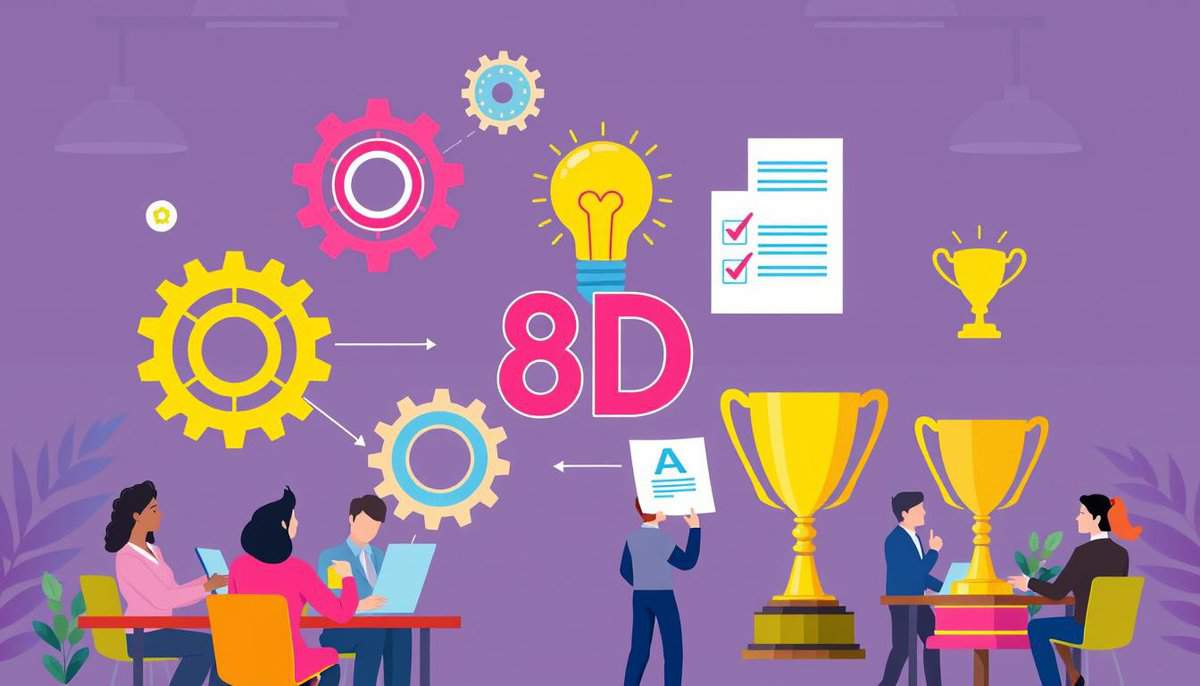



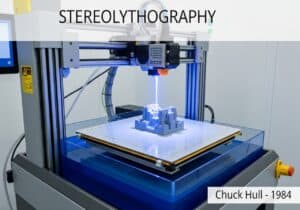

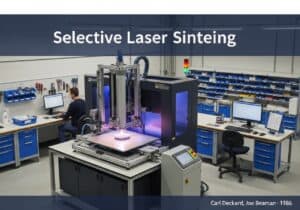



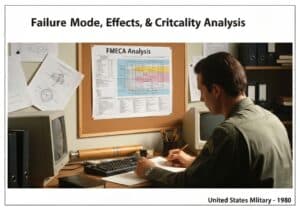




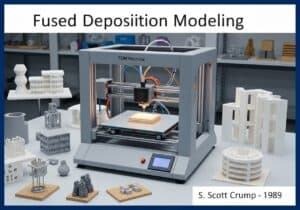




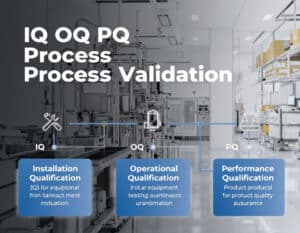






So, did Ford really invent 8D Problem Solving, or was it just refined and popularized there?
التعليقات مغلقة